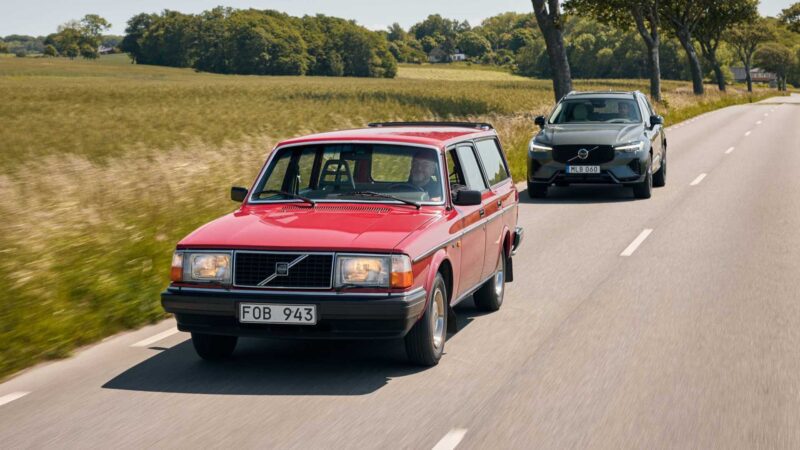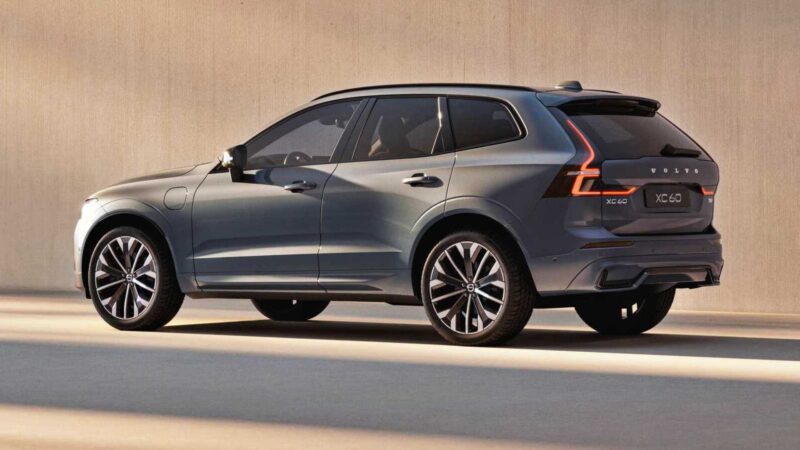Starting in late 2026, Swedish automaker Volvo will begin building the XC60, its global best-seller and most popular model in the United States, at its plant in Ridgeville, South Carolina. This move will not only strengthen Volvo’s manufacturing footprint in the U.S. but also help it stay competitive against the likes of other compact luxury SUVs in the market, a space which is currently dominated by the likes of BMW, Mercedes-Benz, and Lexus. Currently, most XC60s are manufactured at the brand’s Torslanda plant in Sweden and Ghent facility in Belgium.
The timing of moving production to America is no coincidence, as XC60 sales in the U.S. have surged nearly 23 percent in just the first half of 2025. Earlier this month, Volvo Car Americas reported 40,675 vehicle sales in the second quarter, with electrified models making up 40.8 percent of that total.
This year, XC60 on its own now accounts for over a third of Volvo’s U.S. sales, with a quarter of those sales coming from plug-in hybrids. Globally, the XC60 just overtook the brand’s iconic 240 wagon to become Volvo’s best-selling model of all time, with over 2.7 million cars now on the road


“Adding the XC60 to our Charleston production line will further strengthen its position and attractiveness in the competitive U.S. market, while supporting and creating American manufacturing jobs” – Håkan Samuelsson, CEO of Volvo Cars
Now, the South Carolina plant already builds Volvo’s fully electric flagship EX90 SUV and the Polestar 3. With more than $1.3 billion invested over the last decade since it commenced operations in 2015 with production of the S60 sedan, the 2.3 million sq.ft facility is now equipped with a revamped body and paint shop, a state-of-the-art battery pack line.
It also has the capacity to handle multiple platforms and technologies, and with production of the XC60 planned in both mild hybrid and plug-in hybrid variants, Volvo will be manufacturing vehicles for a broader spectrum of buyers
“The XC60 is the right car for this market. It offers the best of Volvo in a versatile size with the powertrain options to suit our US customers.” – Luis Rezende, President of Volvo Cars Americas
Besides rolling out a host of over-the-air tech upgrades for current customers and scaling up production of its best seller, Volvo is also adapting to broader shifts in the global automotive landscape. Earlier this year, the U.S. raised tariffs on the import of cars and spare parts. For Chinese-made electric vehicles, that figure went from 25 percent to 100 percent, forcing many automakers to rethink their supply chains.
Volvo, owned by China’s Geely but headquartered in Sweden, has largely sidestepped that impact by manufacturing most U.S.-bound vehicles in Europe. Polestar, also under Geely, has localized production of the aforementioned Polestar 3 at the South Carolina plant.
Volvo’s decision to build the best-selling XC60 in the U.S. is both strategic and symbolic. As it marks 70 years in the American market with over 5 million cars sold since 1955, the Swedish giant, renowned for Scandinavian design and some of the safest cars on the road, is doubling down on its commitment to build more where it sells.
Source: Volvo

